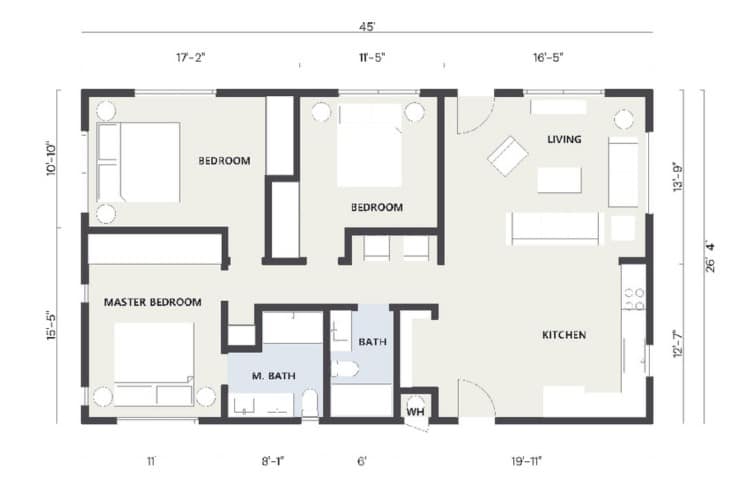What Are ADU Electrical Requirements in California?
15 min read
ADU electrical requirements in California regulate panel sizing, circuits, solar readiness, and utility connections to keep units safe, efficient, and compliant with Title 24 energy standards. Most ADUs need a 100–200 amp panel, ESS-ready wiring, and for detached units, a dedicated utility pathway. In San Diego, homeowners must also follow SDG&E’s rule requiring a separate meter for new ADUs, which can significantly affect planning and costs. These codes not only ensure safety but also support California’s clean energy goals.
“Between 2016 and 2023, the number of ADUs permitted annually in the state grew from 1,336 to 26,924, a 20-fold increase.” (California HCD ADU Handbook Update 2025)

Why Proper Electrical Planning Matters for Your ADU
Proper electrical planning is one of the most critical steps when building an accessory dwelling unit (ADU) in California. Ignoring California Electrical Code requirements or rushing the permitting process can result in fire hazards, overloaded circuits, or failed inspections that delay your project. By correctly sizing the main electrical panel and preparing for solar ready or energy storage system (ESS) infrastructure from the beginning, you not only meet Title 24 Energy Compliance standards but also reduce long-term costs and improve overall energy efficiency.
Because electrical work is considered a major part of a home’s infrastructure, any panel upgrade requires an Electrical Permit and review by local authorities. As Better Place Design & Build explains, “Upgrading your electrical panel requires a permit from your local government agency, as it is considered part of the building’s infrastructure and a safety issue… always work with a professional electrician.” For San Diego homeowners, that means hiring contractors experienced in California ADU laws, Title 24 energy standards, and SDG&E’s separate electrical meter requirements. With smart planning, your ADU will not only pass inspection but also be future-ready for EV charger readiness, battery storage, and sustainable housing upgrades.
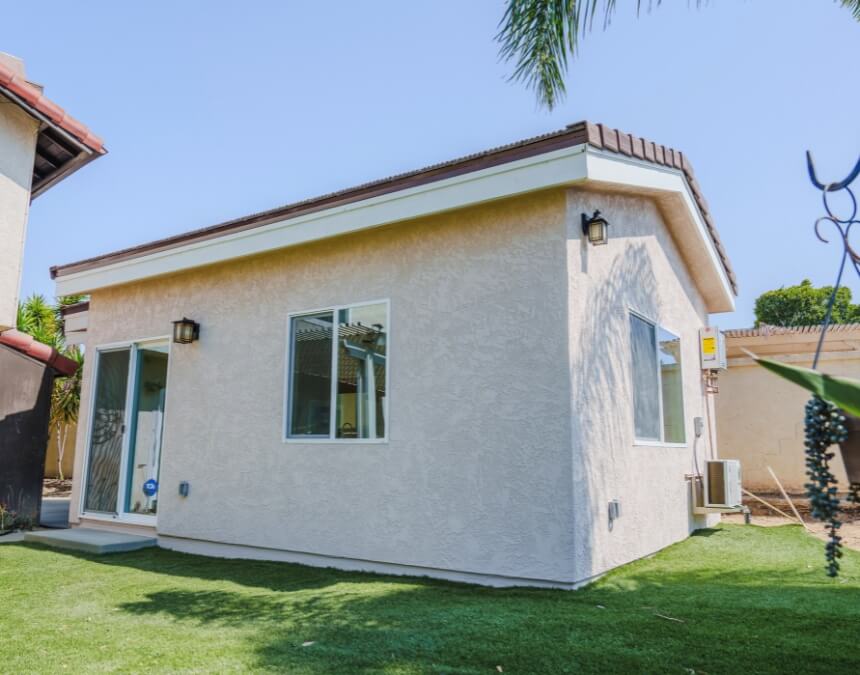
Proper electrical planning ensures your ADU meets Title 24 standards, avoids inspection delays, and is future-ready for EV chargers and solar.
Does an ADU Need Its Own Electrical Panel?
In California, whether an accessory dwelling unit (ADU) requires its own electrical panel depends on the unit’s size, electrical load calculation, and local ADU regulations. Smaller units in single-family homes can sometimes run on a sub-panel installation connected to the home’s main system, while larger or new construction detached ADUs may require a separate panel to safely meet California’s electrical code requirements. This ensures that major appliances, HVAC, and other high-demand systems do not exceed the home’s existing wiring and circuit requirements or compromise electrical safety compliance.
In San Diego, the rules are more strict. “As of March 2023, SDG&E has confirmed that all new accessory dwelling unit construction requires a separate electric meter.” (Patch) This policy means every ADU must have its own utility meter for accurate billing and reliable electric service. While the cost can be significant—installing a dedicated meter averages around $15,000 and may require trenching or upgrading the electrical system—a separate meter future-proofs the ADU, supports EV charger readiness, and keeps the main home’s panel from overloading while maintaining compliance with California Building Codes and Title 24 Energy Standards.
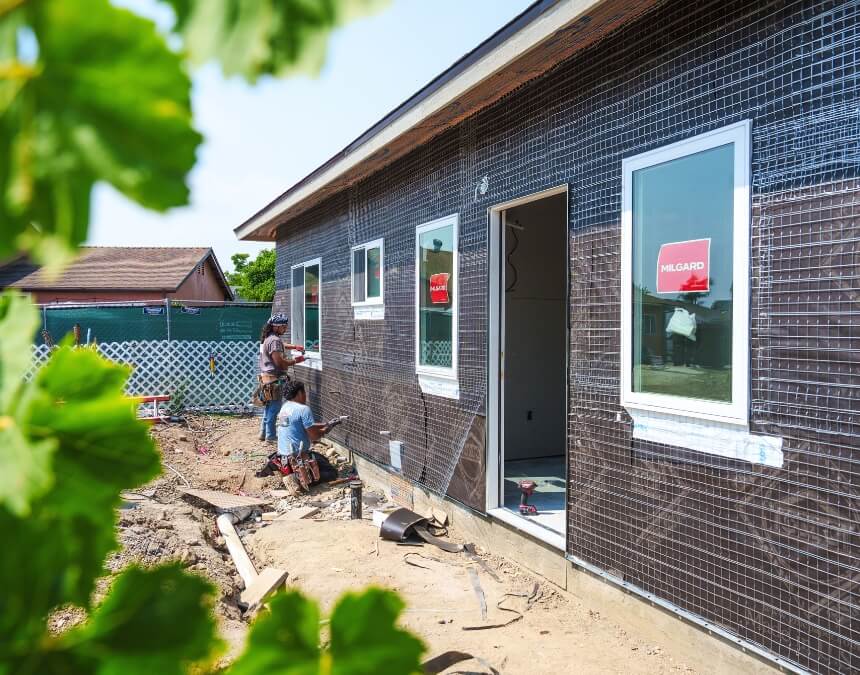
Whether your ADU needs a separate panel depends on load calculations and local utility rules—San Diego requires separate meters for new units.
How Many Amps Does an ADU Need?
Most accessory dwelling units (ADUs) in California require a 100–200 amp electrical panel to operate safely and in compliance with California’s electrical code requirements. This capacity ensures enough power for essential systems like HVAC, kitchen appliances, and laundry equipment while meeting state energy efficiency standards. Smaller studio or junior ADUs may use as little as 60 amps, but this is rare and usually applies only to compact units with limited appliances (Better Place Design & Build).
Best practice is to size slightly above the minimum. As licensed builders note, “While code may allow a 100-amp panel, most recommend installing a 125-amp subpanel. This prevents the system from operating at full capacity and accommodates future additions like electric vehicle charging or other high-demand appliances” (Better Place Design & Build). California’s Title 24 Energy Compliance rules also require new ADUs to be electric-ready, meaning a conduit must run from the subpanel to a future charging location. Planning for at least 125 amps helps ensure your ADU is safe, code-compliant, and prepared for modern building electrification.

Most ADUs need a 100–200 amp panel, but planning for 125 amps ensures compliance and leaves room for future high-demand appliances.
How to Calculate Electrical Load for Your ADU
Calculating the electrical load for your accessory dwelling unit (ADU) is essential to confirm the panel has enough capacity to meet daily power needs without breaker trips or safety risks. The process considers the combined wattage of appliances, HVAC, lighting circuits, and other systems, then converts that demand into amperage using standard wiring & circuit requirements. While online tools can provide an estimate, California homeowners should always rely on a licensed electrician to perform an official electrical load calculation for compliance with California Building Standards Code and local permitting. This ensures your ADU meets safety standards, aligns with Title 24 Energy Efficiency Standards, and avoids costly delays during the permitting and approval process.
Here are the main loads to include in your calculation:
- Kitchen appliances – refrigerators, ovens, microwaves, and dishwashers typically require dedicated circuits.
- HVAC systems – heating and cooling units (like mini-splits or heat pumps) draw significant power.
- Laundry equipment – washers and dryers require their own dedicated 20–30 amp circuits.
- Electric vehicle (EV) charging – if you plan for EV charging, you’ll need a separate 30–50 amp circuit.
- Lighting & outlets – general lighting and receptacle circuits, with GFCI protection in kitchens, baths, and exterior outlets.
“A standard accessory dwelling unit will draw ~80–100 amps at peak use… we generally install a 125-amp sub-panel to allow for future upgrades like EV chargers or other appliances.” (Better Place Design & Build).
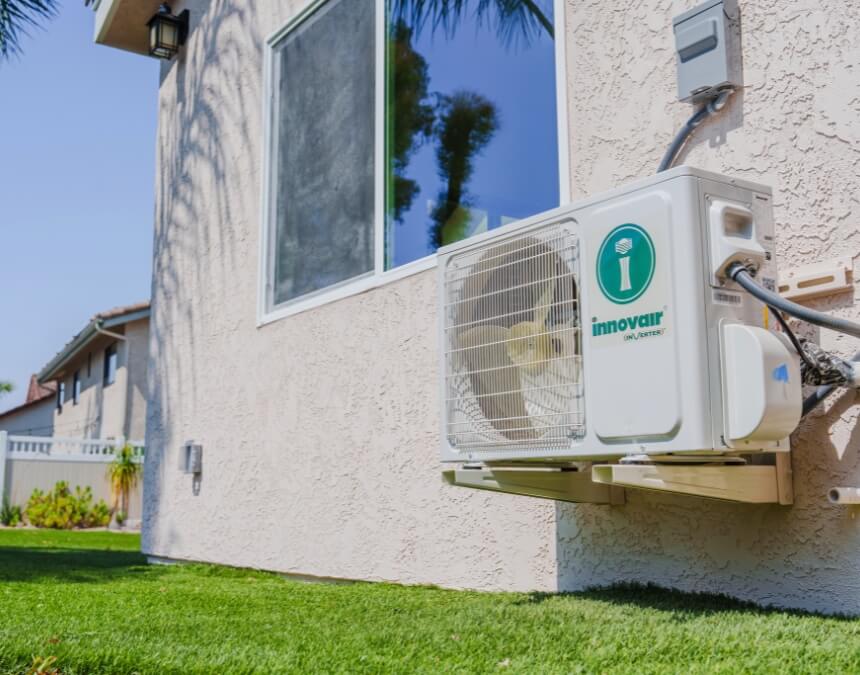
Always calculate your ADU’s total electrical load before choosing a panel size—overlooking this step can lead to overloaded circuits, costly upgrades, or failed inspections.
Title 24 Compliance & Solar Requirements
Under California’s 2022 Energy Code, newly constructed ADUs must be energy storage system (ESS) ready. This requires each ADU to include infrastructure for future battery backups — specifically, “a minimum backed-up capacity of 60 amps and a minimum of four ESS-supplied branch circuits” (California Energy Commission). Even if a homeowner chooses not to install a battery right away, the electrical wiring and panel must still be designed to meet electric-ready requirements under Title 24.
Solar panel requirements vary depending on the type of ADU and the California Residential Code. Detached new ADUs are generally required to include a solar PV system, while garage conversions, internal units, or small prefab ADUs often qualify for statewide exemption ADUs. For example, when the calculated solar system falls below about 1.8 kW, the ADU may be exempt from panel installation (SFbay ADU).
To help offset costs, homeowners can use several incentive programs:
- Federal Investment Tax Credit (ITC) — 30% credit on solar installation costs (Solar.com).
- SDG&E Net Energy Metering (NEM) — credits surplus solar energy against future utility bills (SDG&E).
- San Diego Solar Equity Program — financial assistance for income-qualified households to meet solar power readiness requirements (SD Solar Equity).
By integrating solar-ready infrastructure into your ADU design, you’ll comply with California Building Standards Code, improve long-term efficiency, and align your project with the state’s broader sustainable housing goals.
| ADU Type | Solar Panels Required? | Notes / Exceptions |
|---|---|---|
| Detached New ADU | ✅ Yes | Must include a PV system sized per state formulas. In San Diego, typically ~1.5–3 kW for 800 sq ft. units. |
| Attached ADU (new addition) | ✅ Yes | Treated as new conditioned space; solar system required unless shading or roof area prevents it. |
| Garage Conversion ADU | ❌ No | Exempt if converting existing structure (garage, attic, basement) into living space. |
| Internal Conversion ADU | ❌ No | Exempt since no new conditioned footprint is added. |
| Junior ADU (JADU) | ❌ No | Always exempt – considered part of main dwelling. |
| Very Small ADU (<500–600 sq ft) | ❌ Often Exempt | If the calculated PV size is below 1.8 kW, no solar installation required. |
Key Electrical Components Required for ADUs
Every accessory dwelling unit (ADU) must include essential electrical components that comply with both the National Electrical Code (NEC) and the California Building Standards Code. Meeting these electrical safety compliance requirements ensures the ADU passes inspection and provides safe, reliable power for long-term use.
Panels
The panel is the core of an ADU’s electrical system. It must offer enough capacity, proper grounding, and clear labeling for easy access. If the ADU uses a sub-panel installation, feeder conductors must be sized correctly, and a main disconnect should be located at the ADU. Neutral and ground buses must remain separate, and the grounding system must connect to the ADU’s electrode system. Panels also require 36-inch clearance in front to meet California’s electrical code requirements.
Circuits
ADUs need dedicated circuits for high-power appliances such as ovens, HVAC units, and laundry equipment. California building codes require AFCI protection and GFCI & AFCI protection installations in specific locations like bedrooms, kitchens, and outdoor areas. For kitchens, two 20-amp small appliance circuits are mandatory.
Outlets & GFCI Requirements
Outlet spacing must follow code, with outlets no more than 12 feet apart along walls in living spaces. GFCI protection is required in wet or damp locations, including kitchens, bathrooms, laundry areas, and exterior outlets. Many jurisdictions also require arc fault protection or combination GFCI/AFCI breakers to reduce risks.
Lighting (High Efficacy)
ADUs must use high-efficacy lighting fixtures, typically LED, to meet Title 24 Energy Efficiency Standards. Recessed fixtures must be IC-rated, fully enclosed, and not use screw-in lamp bases. Switch placement follows building standards, requiring controls at every entry point and three-way switches where appropriate.
Wiring
All electrical wiring must be sized to match circuit demand (e.g., 12 AWG for 20A, 10 AWG for 30A) and secured in approved raceways to prevent damage. Proper wiring & circuit requirements also include bonding metallic parts and connecting the grounding system correctly. Following these California’s electrical code requirements helps ensure ADUs meet inspection approval and long-term fire protection standards.
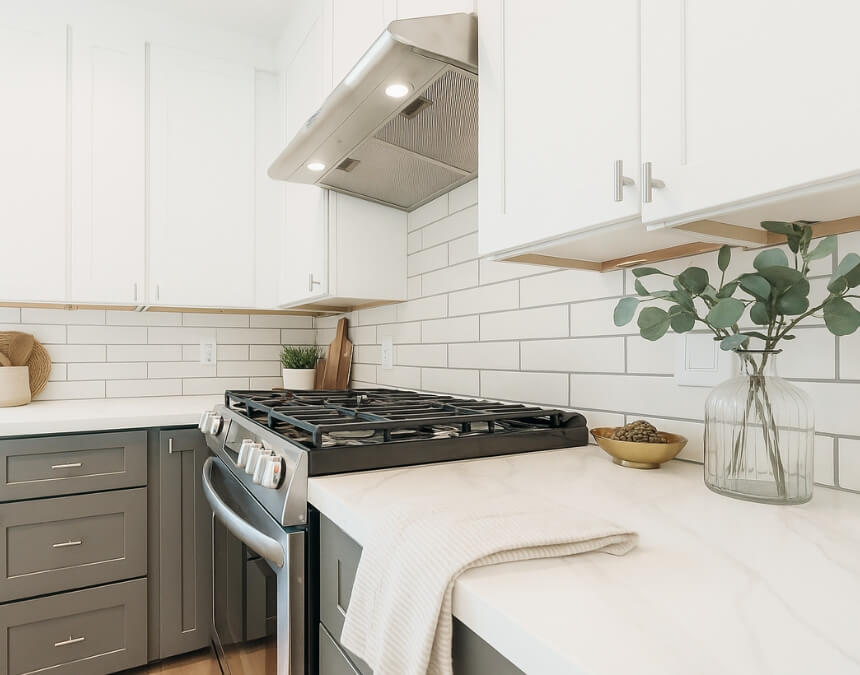
Dedicated circuits for high-demand appliances like ranges and HVAC are essential for compliance and long-term reliability in ADUs.
Typical Costs for Electrical Service Upgrades in San Diego
Upgrading the electrical service for an ADU in San Diego typically involves several components, each with its own cost range based on site conditions, layout, and utility provider requirements.
- Panel upgrades: Converting or enhancing your existing main electrical panel or subpanel usually costs between $1,500 and $5,000, depending on the amperage increase, rewiring, or relocation. This step ensures compliance with California’s electrical code requirements and local building standards.
- Separate meter installation: Installing an independent utility meter for the ADU is one of the most expensive tasks. In San Diego, homeowners report an average of $10,500 for this work, which also requires a Building Permit and inspection approval from the city or county.
- Trenching or underground line work: Running new service lines or conduits, especially underground, can cost $5,000 to $10,000 depending on distance, soil conditions, and existing infrastructure. These upgrades are often required for upgrading the electrical system in detached units.
- Timeline & coordination: Utility coordination, permit reviews, and construction can extend the process to several weeks or even months. SDG&E’s service planning guidelines emphasize allowing adequate time for design, inspections, and permitting (San Diego Gas & Electric).
⚠️ These figures are estimates. Local labor rates, inspection fees, and permitting costs can push expenses higher. To avoid surprises, always request detailed quotes from licensed electricians familiar with California Building Codes and your local Planning Division before finalizing your budget.
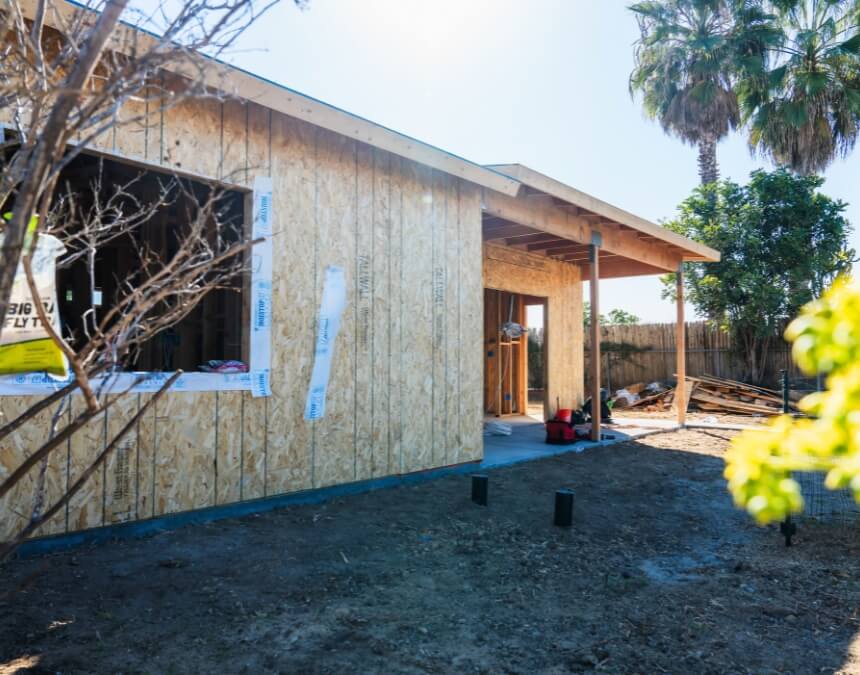
Budget realistically for service upgrades like trenching and separate meter installation—these often add $10,000–$20,000 to San Diego ADU projects.
How to Work with SDG&E on ADU Utility Projects
Here’s a streamlined overview of the steps you’ll go through when coordinating with SDG&E to set up electrical service for an ADU in San Diego:
- Initial Consultation
Start by contacting SDG&E or using their Builder Services portal to review your ADU project. At this stage, you’ll discuss meter placement, architectural plans, and whether your current service can handle the additional load or if upgrading the electrical system will be required. - Application & Load Report
Submit a formal service request, which includes site layouts and structural calculations prepared by a licensed electrician. The utility will use this electrical blueprint and load report to determine if improvements such as a panel upgrade or separate meter are necessary. - Utility Design Plan
SDG&E engineers will create a plan detailing whether you’ll need overhead or underground service, meter placement, and conduit design. This step ensures compliance with California’s electrical code requirements and local planning division review. - Panel / Meter Decision
Based on your load report and state regulations, SDG&E will confirm whether a sub-panel installation, main panel upgrade, or a separate utility meter is needed. In San Diego, the current rule is that all new ADUs require a separate electric meter for independent billing and safety compliance. - Permitting & Inspection
You must submit your electrical plans for a building permit with the city or county. After installation, schedule inspections to confirm safety and code adherence. SDG&E will energize the service only after both utility and local inspection approvals are complete.
Choosing the Right Electrical Contractor
Selecting the right contractor for your ADU project can make all the difference in meeting California’s electrical code requirements and passing inspection. Here’s a checklist of what to look for:
- California licensure & bonding — Always verify that the contractor holds a valid C-10 license through the Contractors State License Board.
- Title 24 / Energy Code experience — They should understand Title 24 compliance, solar readiness, and ESS requirements.
- SDG&E utility familiarity — Look for contractors experienced with SDG&E service upgrades, utility meter placement, and coordination with the local planning division.
- Proven ADU projects — Request examples of completed ADU projects or references to confirm experience with sub-panel installation, outlet spacing, and GFCI & AFCI protection in compact units.
At Better Place Design & Build, we combine expertise in design, permitting, and construction management. Our team ensures your contractor aligns with California Building Standards Code, Title 24 Energy Efficiency Standards, and San Diego utility rules, while guiding you through the full permitting and approval process for a safe, compliant, and future-ready ADU.
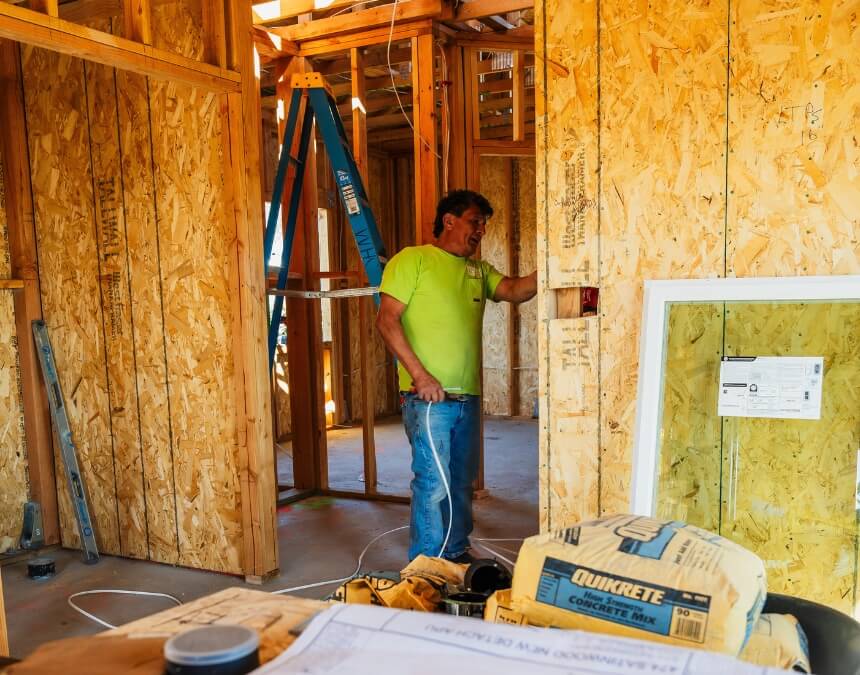
Hiring a licensed C-10 electrician with ADU experience ensures your project meets Title 24 and passes inspections without costly delays.
Planning Your ADU’s Electrical Setup
Getting the electrical system right for your ADU in San Diego requires careful planning and following a clear sequence of steps. Here’s a roadmap homeowners can use to stay compliant with California’s electrical code requirements and local building standards:
Evaluate Load
Start by identifying the appliances and systems your ADU will include—kitchen range, laundry, HVAC, lighting, and possibly an EV charger. A licensed electrician should perform a formal electrical load calculation to determine demand and ensure compliance with Title 24 Energy Efficiency Standards.
Determine Amp Needs
Most ADUs require between 100–200 amps depending on size and appliances, but many builders recommend a 125A sub-panel installation to allow for future loads like solar inverters or electric vehicle charging.
Coordinate with SDG&E
In San Diego, SDG&E requires a separate utility meter for all new ADUs as of March 2023. This may involve upgrading to a dual-meter main panel, trenching, or installing new conduit. Expect the permitting and approval process and utility review to take several weeks to months.
Ensure Solar & ESS Readiness
Under California Building Standards Code (Title 24), most new detached ADUs must include a solar PV system and be electric-ready (battery-ready). Panels and wiring must allow for 60A of backup capacity and four dedicated circuits to meet energy efficiency standards.
Hire an Experienced Contractor
Choose a contractor who understands California ADU regulations, Title 24 compliance, and SDG&E’s coordination process. At Better Place Design & Build, our team manages everything—from site plans and permits to inspections—ensuring your ADU is safe, efficient, and fully compliant with all building codes.

Plan wiring pathways early during framing—retrofitting electrical later adds cost and complexity to your ADU project.
Conclusion
Building an ADU in California involves more than just design and construction—it also requires navigating California’s electrical code requirements, Title 24 compliance, and local rules from Electric Service providers like SDG&E. By planning early for the upgrading of electrical systems, proper panel sizing, and solar-ready infrastructure, homeowners can avoid costly delays while preparing their unit for EV charger readiness and future energy storage. The key is working with a licensed contractor who understands California Building Codes, local planning division permitting, and ADU-specific challenges in San Diego. With professional guidance and careful coordination, your ADU will be safe, efficient, and fully compliant—helping you achieve long-term value, sustainable housing benefits, and alignment with the state’s clean energy goals.

A well-planned electrical system not only passes code but also future-proofs your ADU for EV charging, storage, and sustainable upgrades.
Frequently Asked Questions
California’s latest ADU rules focus on safety, energy efficiency, and utility compliance. New ADUs generally need a 100–200 amp electrical panel, ESS-ready wiring to support future battery storage, and in detached units, a dedicated utility pathway. Title 24 requires solar readiness, with exemptions for certain conversions, and in San Diego, SDG&E mandates that all new ADUs have a separate electric meter.
California now requires new detached ADUs to have their own separate electric meter under utility rules like SDG&E’s, which ensures accurate billing for the unit. This means homeowners can no longer simply share the main home’s meter, and while installation adds cost, it allows independent tracking of usage and prevents overloading the primary panel.
In California, only very limited electrical work can be done without a license, such as minor replacements of fixtures, switches, or receptacle covers that do not require altering circuits or wiring. Any significant work—like installing new circuits, panels, or wiring—must be performed by a licensed C-10 electrical contractor to comply with state law and pass inspections.
To split utilities between an ADU and the main house, you typically need either a sub-meter or a separate electric meter. A sub-meter allows you to track usage but keeps billing tied to the main home’s account, while a separate meter (required in San Diego for new ADUs) gives each unit independent service and billing. Utility providers like SDG&E oversee the application, design, and installation process.

